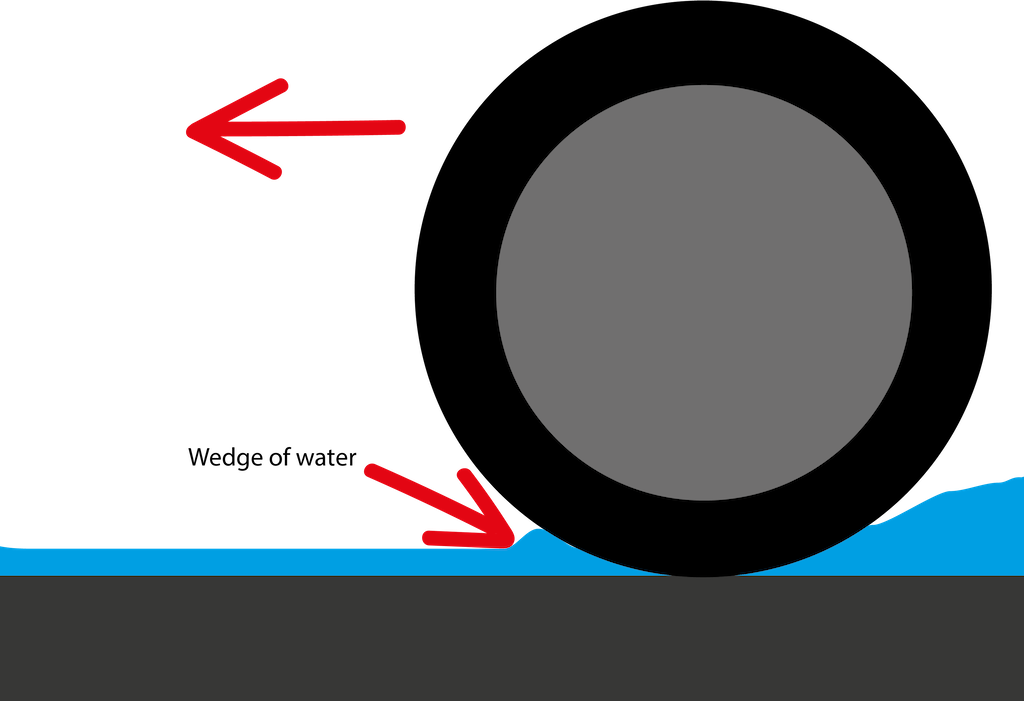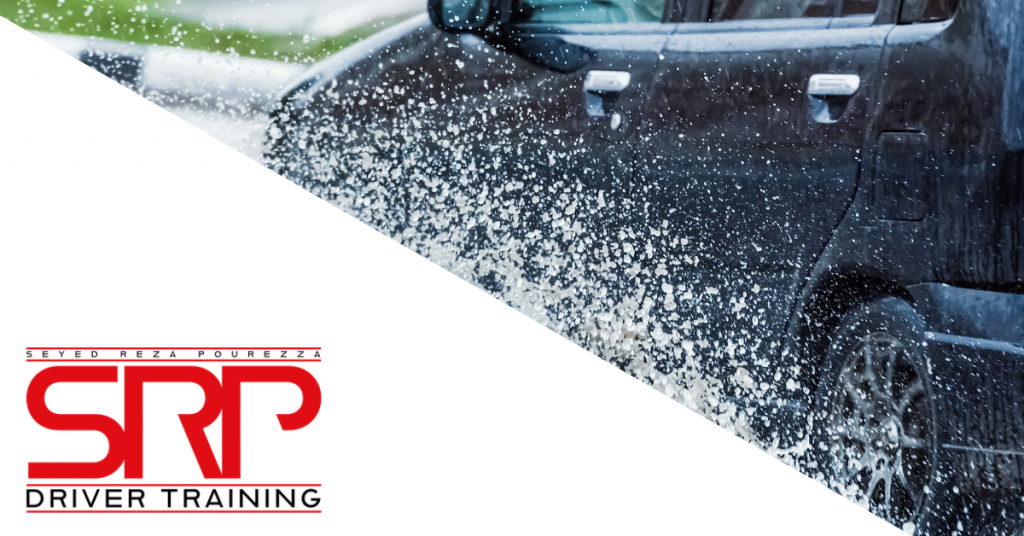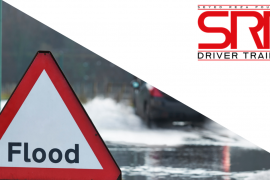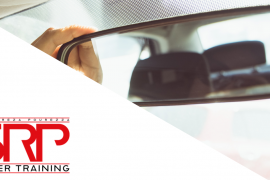Aquaplaning or Hydroplaning is a loss of control of the car due to water on the road surface. It’s a hazardous thing to experience and can be pretty scary. In this blog post we look at what it is, what we can do to stop it and should the worst happen, how to deal with it.
When we are driving down the road, our tyres are in contact with the road surface. The rubber bites into the gaps in the tarmac and provides the grip that moves us forward. As a result of how tyres work, they force their way into the little gaps between the stones of the tarmac. When the tyre moves on, little bits of rubber are ripped from the tyre and left behind. This is why tyres wear.
Racing tyres used in dry conditions are what we call slicks. They have a smooth surface of rubber which allows maximum contact between the tyre and the road. Racing cars can get away with this because they have ready access to the pit lane where they can change tyres to ones more suitable when the weather conditions change.
When it rains, the racing teams will fit wet tyres. These are easy to tell apart because they have tread patterns on them. The tread is the key to driving safely in the wet.
A slick tyre would float on top of the water, giving the racing driver no grip at all. The tread allows the tyre to move the water out of the way and get to the road surface. In racing applications, we wouldn’t fit wet tyres if we didn’t need to. This is because less rubber on the road means less grip and therefore less speed. When the rains come, it’s a necessary sacrifice.
Tyre Requirements for Road Cars
On the driving test, there are two tell-me questions about tyres, both are important to driving safely in adverse conditions.
Please tell me how you would find the correct tyre pressures for this vehicle and how you would check them.
The correct tyre pressures will be contained in the owner’s manual for the vehicle. You would check them using a reliable pressure gauge and when the tyres are cold.
Please tell me how you would ensure your tyres have sufficient tread depth and are in good condition for use on the road.
Tyres must have a minimum of 1.6mm of tread across the central three-quarters of the breadth of the tyre and around its entire circumference. There should also be no cuts or bulges to the sidewall.
Both tread depth and pressure are important for safe driving in wet conditions. If your tyres are underinflated the tread of the tyre won’t have the rigidity it needs to function as designed. If the tyre is overinflated the tread of the tyre will be too rounded and less will be in contact with the road.
Tread depth is the most important factor here though. There is a legal minimum of 1.6mm tread on a road-going tyre for a car in the UK and most of Europe. There are different tread depth requirements for large vehicles and motorcycles.
How Does a Tyre Deal with Water?

When a tyre comes across standing water on a road surface, such as a puddle or as has recently happened in Sheffield, flooding, the tread goes to work. First, the tyre pushes the water ahead of the wheel, forming a wedge of water ahead of the tyre. The tread then works to pull that water through the tyre or to divert it around the tyre where possible. This means the rubber can stay in contact with the road.
If you tyres have sufficient tread, they will continue to pull the water through in a controlled way, throwing it out the back a spray. The problem comes when the standing water becomes deeper than the tread of the tyre
Once the tyre has maxed out it’s ability to move water, it starts to climb the wedge of water. This pulls the tyre’s contact patch, the actual bit of the tread in contact with the tarmac, away from the road surface, allowing water in under the tread.
Now, you are Aquaplaning.
A brand-new tyre will have approximately 8mm of tread depth. They will be capable of moving approximately 30l of water a second when driving at 50 miles per hour. As the tread wears down that ability to move water reduces, but it isn’t linear. The drop-off in performance is much greater when a tyre is between 3mm and the legal limit than the drop-off between 8mm and 3mm.
Help! I’m Aquaplaning! What do I do?
Firstly and most importantly. Do not panic.
Come gently off the throttle and drop the clutch. This will allow the wheels to turn at whatever speed they want. Do not use the brakes at all. If you use the brakes you will stop the wheels dead, which will cause greater problems when you get to the other side of the puddle and need to control the car again.
Do not steer the car. Your tyres have no grip at all which means that steering isn’t going to change direction. When the grip returns, if your wheels are not going in the direction of travel, you will veer off sideways and probably crash.
Once the grip has returned to all four wheels, gently raise the clutch again so the engine regains control of the speed, slow the vehicle down and stop as soon as it is safe to do so. You will be quite excited by what’s just happened and the stress hormones of Cortisol and Adrenaline are not good friends with safe driving.
What Can I Do To Prevent Aquaplaning?

The first thing you can do is to make sure your tyres are in good condition. Good tread with even wear is very important, as is making sure they are correctly inflated. It’s very important to check your tyre pressures when the weather changes as ambient temperature changes can affect PSI.
The most important factor is your speed. When you start to see standing water on the road you should slow down. Even good tyres can result in aquaplaning if you are going too fast.
All-season or winter tyres could also help. Summer tyres in good condition can start aquaplaning with as little as 6mm of water on the road surface when travelling at 50 miles per hour.
Avoid areas of the road where water congregates. Dips and ruts in the road can mean an increase in water depth where you would least expect it. Keep clear of puddles too, not only does it increase the risk of aquaplaning but splashing pedestrians knowingly is an offence.
If you are concerned about your abilities to drive in adverse weather conditions, consider taking additional training. Driving instructors are skilled in dealing with water, snow and ice and will often have more availability when the weather gets bad; new learner drivers don’t have the skills to safely handle the conditions and in extreme weather, we have to cancel some lessons for safety. You could get in touch and see if SRP Driver Training could fit you in for a special one-to-one bad weather session.




